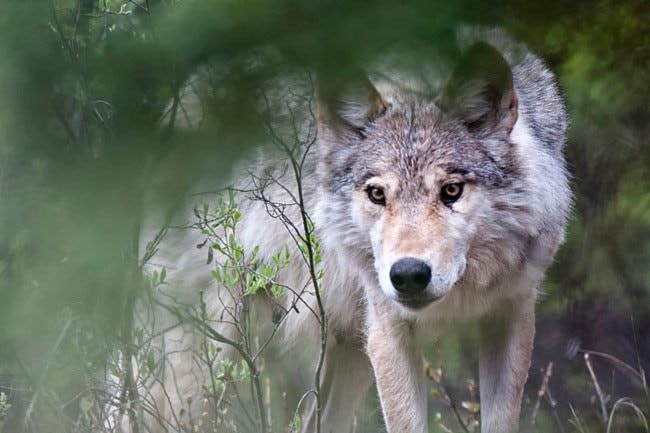Leave it to a writer to challenge the concept of photography.
The new exhibit at the Yukon Arts Centre Gallery shows two naked men wrestling, the insides of a Montreal bakery, the second coming - and unnoticed death - of Christ, the never-before-revealed scenes from three iconic films and it may even help you find your lost gloves.
But above all, this new exhibit asks you to rethink the art of taking a photo.
“We don’t even think about photography that much any more,” said curator Lance Blomgren. “We use it in sort of candid ways and sort of forget that this raw material is telling the story of our lives.”
The Dawsonite may be a writer, but Blomgren’s exhibit hopes to show how a story, with its drama, flow and tension, can be told in photos.
And while there are two “films” in the selection, Blomgren stresses this is not a collection of film stills. Instead, as its name suggests, it’s a collection of Still Films.
“Now, in our digital world, we tend to forget cinema is really just a photographic process,” he said, standing in front of Eadweard Muybridge’s 1887 Two Men Wrestling.
The technology Muybridge invented and used to take series like Two Men Wrestling led the Lumiere brothers to create moving pictures.
“We don’t really view photography in terms of telling stories or movement. It’s all very still. The narrative potential of photography kind of ended when cinema began. Photography has really stayed still, it didn’t really evolve that much.”
But the collection doesn’t stay in Muybridge’s time.
Most of the pristine white gallery walls are littered with contemporary pieces. They include two locals and two iconic artists from the 1970s.
Mary Beth Edelson combines performance with photography. She was known for going out to the wild and dancing around with a camera, said Blomgren. Eventually, she would turn it into photographic art haunted with hints of phantoms, like her Cliffhanger series which is included in the collection.
Duane Michals, known as the innovator of sequential photo-narratives in contemporary art, is also on display. His Chance Meeting is a most basic and classical expression of story in photo. And for that, it is famous. Its use of each frame tells the action without much detail. What the two men in the photos are doing and where they are moving is on display but their motive and meaning is left up to interpretation.
For most of the stories told in the exhibit’s series, it is the “in between” that is left up to the audience to decide. Except for one.
Dawson City’s own Charles Stankievech claims one of the two films in the collection with the seven-minute, Zeno’s Phantasies.
Creating his own software to complete the task, Stankievech took three extremely iconic films: the Lumiere brothers’ train footage shoot, Glenn Gould playing the piano in Montreal in the 1950s and US military documentation of nuclear testing, and found the in-between scenes left unseen by the early and imperfect film technology.
Then, he strung them all together to make his own film.
The show tries to get people to read between the lines, says Blomgren.
“Like a mystery novel, it’s the stuff you don’t know that keeps you reading,” he says.
And much is left unknown in Whitehorse’s Mario Villeneuve’s Handforms Resurrected. Like a taxidermist who brings prized hunts back to life, Villeneuve uses a unique and complicated printing technique to restore a series of abandoned gloves he found around town.
“It’s a really smart show,” says gallery director, Mary Bradshaw.
This is the second of a whole series of shows done by independent curators, she explained. And the local appeal that Blomgren brought, coming from within the territory, was really exciting, she said.
The whole collection reads like a thesis at times, she added.
“He has a really strong thread,” she said of Blomgren. “Making the argument that photographs do more than just capture the movement.”
Chris Marker’s 1962 La jetee is the other film in the collection. The 27-minute piece tells a complex story, entirely in still frames. The film, which inspired Brad Pitt’s 12 Monkeys, was screened at the Old Firehall prior to the exhibit opening, but the book of the stills is displayed at the gallery.
To further blur the distinction between photography and cinema, the French artist called the film a “photo novel” and called the book a “photo cinema,” explained Blomgren.
But it was the collection of contemporary work that really impressed Bradshaw.
“A lot of modern photography isn’t about a story but he has young, current artists doing that,” she said. “So it’s really refreshing to see.”
And not all of the newer pieces rely on the use of digital technology.
For example, a series of simple snapshots shows people in the middle of dropping something, versus a panorama of a woman’s suicide, compiled from several images.
There is a literary sensibility to it all, Blomgren said.
And while some of the works’ messages are explicit, others range from interpretive social commentary to not really saying much at all besides “look at this movement.”
But in the end, a story is told through images.
And that is the message, said Blomgren.
Still Films is at the Yukon Arts Centre gallery until May 21 2011.
Contact Roxanne Stasyszyn at
roxannes@yukon-news.com
